
Flooding is becoming an increasingly pervasive problem for settlements and cities around the world, but that doesn’t mean that no-one is trying to do anything about it. In fact, there are some engineers that are looking at retrofitting entire cities to make them flood-proof, as well as city planners changing domestic building plans to account for hurricanes or other severe weather events.
On a somewhat smaller scale, a former associate professor at the University of Waterloo named Elizabeth English has set up the Buoyant Foundation project. Its goal is to promote the concept of amphibious buildings, in other words buildings that are designed for land, but that have the ability to self-adjust if there’s ever a flooding event in the location where they’re built.
The Buoyant Foundation Project was established in 2006, with its first prototype building launched in 2007. Located in New Orleans, the prototype house had a steel frame fastened around its underside. This frame had foam blocks affixed to it, which gave a sufficient amount of buoyancy for the house to float. The next item on the agenda was to sink posts at every corner of the house into the ground, to prevent it from floating away in the event of a flood.
Next, a flood tank was built around the house to test, and the engineers involved in the project began to pump in water from the nearby river. They managed to get it to float without it moving off its anchorage points (the posts).
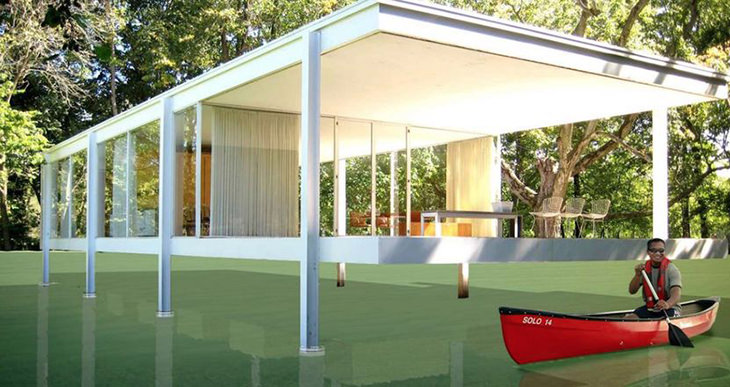
A particular highlight of this technology is that the process was relatively cheap and easy to execute. What is required, however, is at least two individuals that are knowledgeable on construction, as well as some heavy equipment.
The system costs between $10 and $40 per foot to install, but this means that it’s still two to three times cheaper than putting a house on permanent elevation. What’s more is that you can’t really tell that the system is present, meaning that it’s discreet and leaves a house’s exterior almost untouched.
As with everything, there is a downside. This system is not ideal for areas that are susceptible to high-speed waves. Although it isn’t a one-size-fits-all solution, it’s an excellent solution for use in certain circumstances.
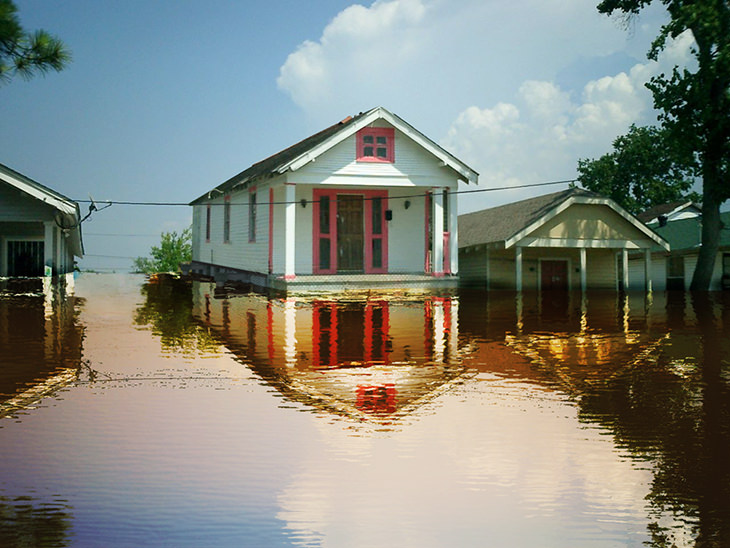
In addition, there are enough circumstances that demand solutions out there, and these have contributed to the growth of the Buoyant Foundation Project. In fact, it has been tasked with producing low-cost versions of the system for vulnerable populations in Nicaragua and Jamaica. Discussions are also taking place with indigenous populations in coastal areas of Canada and Louisiana.
One particularly significant challenge is areas in high-risk flood zones necessitate that homeowners buy flood insurance, but the US’ National Flood Insurance Program automatically disqualifies anyone who has a home with amphibious foundations from being able to receive a subsidy.
The US’ Federal Emergency Management Agency has gone on the record to say that Buoyant Foundation Project’s system requires more research, and the project has also been met with plenty of resistance from other quarters. Nevertheless, individuals outside the US believe in what the project is trying to achieve, so it looks like the tide is turning in its favor.
BONUS - See how the system works in this next video:
 17:06
17:06
E-Waste Is a Real Problem. What Can We Do About It?
About 6.9 million metric tons of e-waste was produced in the US alone in 2019, out of which only 15% was recycled. How can we solve the growing e-waste problem?
 39:01
39:01
What's so Exciting About James Webb Space Telescope?
Why the new James Webb space telescope is much, much better than Hubble.
 19:19
19:19
This Technology Could Turn the Sahara Into a Green Forest
Scientists have figured out how to turn the Shahra Desert into green farmland, using a technique called terraforming. How is it possible? Find out here...

You Won't Believe That These Things Exist in Japan...
If there's one place on this planet that well and truly at the forefront of modern technology, it has got to be Japan, as these inventions prove...
 4:56
4:56
Ever Wonder What Your Smartphone Is Made Of?
Smartphones are ubiquitous in the modern world, but making them is extremely energy- and resource-intensive. Watch this video to find out more about them.

5 World-Changing Medical Advances From the Past Decade
Perhaps the most important technological advancements are those related to healthcare. Here are 5 such incredible medical breakthroughs from the past decade.

Let's Learn All About Your White Blood Cells
White blood cells (WBCs) are the part of your immune system which is responsible for fighting infection. Learn all about them here!
 8:19
8:19
You Won't Believe What Passes for a Phone in North Korea
You won't believe what phones look like in North Korea!
 5:08
5:08
Erecting a Behemoth: Installation of an Offshore Oilrig
How do they install an offshore oilrig? This video will show you, step by step, how it is done.
 15:55
15:55
This Incredible Documentary Takes You Into the Human Body
A beautiful and graphically advanced animation sheds light on the mysteries of the human body.
 8:10
8:10
Taller Doesn't Mean Bigger - the True Size of Skyscrapers
If you were to compare skyscrapers by area rather than height, which skyscraper would end up on top?
 1:44
1:44
The Accidental Discovery of the World’s First Antibiotic
Not too long ago, it was fairly common to die of the simplest of wounds due to bacterial infection. Penicillin changed everything.
 5:50
5:50
The Rise of the Machines: Can Humanoid Robots Help Us?
Will humanoid robots change the way we work forever?
 16:28
16:28
WATCH: This is What Occurs In Our Brain When We're In Love
We all love being in love, and actually crave it and need it, but what actually happens to our brains when we're in love? Watch this TED Talk to find out.
 20:04
20:04
Emotions Explained: The Science Behind How We Feel
Neuroscientist and psychologist Dr. Richard J. Davidson answers some fascinating questions about emotions you would never expect.

These 18 Photos Capture the Universe Like Never Before!
See the universe in a new light with these astonishing photos.

8 Important Inventions That Were a Complete Accident
It might be interesting for you to learn that some very important scientific innovations were born as a result of an accident.

Study: New Link Found Between Parkinson's and the Gut
A recent study has identified gut microbes likely involved and linked them to decreased riboflavin (vitamin B2) and biotin (vitamin B7), suggesting a potential treatment
 14:34
14:34
What to Do (and Avoid) When Setting Up a Smart Home
Here's how you can set up a family-friendly smart home that will last long.
 12:35
12:35
The World's Most Dangerous Blood Type
Today we will discuss the most dangerous blood type to have, the one you cannot get an infusion for. Let's delve right in and learn about this rare blood type.

20 Amazingly Simple Inventions That Make Life Easier
Some wonderful inventions can fix some of the most annoying little problems that bug us every single day. Here are 20 of the most inventive ideas I've ever seen that I can't believe no one has invented before.

Incredible New Bionic Arm Fuses With Woman's Nerves
Karin's bionic hand is real sci fi, making her one of the first true cyborgs.
 5:03
5:03
WHY is Sugar So Devilishy Addictive?
There seems to be a fascinating scientific explanation for why our will power is weak when it comes to sugar!

Study: Biggest Ocean in the World is.. Underground?
A groundbreaking discovery by researchers reveals an enormous water reservoir deep beneath the Earth's surface.
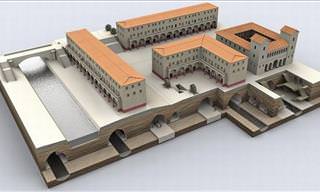
Six Inventions Da-Vinci Made Ahead of Their Time
He created and envisioned many inventions that were sometimes even centuries ahead of their time. Was there ever a genius as great as Da-Vinci?
 20:01
20:01
Future Tech: 19 Innovations About to Change Our World
These groundbreaking new technologies will change our world.
 21:51
21:51
What Will the Universe Look Like in 10 Quintillion Years?
These questions take us beyond science into the realm of imagination, as we contemplate the ultimate fate of our Universe and everything within it.
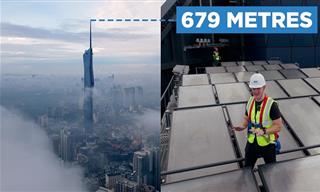 13:21
13:21
The Race to Complete the World's Second-Tallest Skyscraper
Malaysia is all set to unveil the world’s second tallest skyscraper.
 4:57
4:57
Mjøstårnet - The World’s First Wooden Skyscraper
Mjøstårnet is an 18 story tall skyscraper towering over the Norwegian countryside. What makes it so special is that it's made entirely out of wood...
 8:46
8:46
Science: What is Reality? Dive in and Find Out!
What if everything you see, feel, and experience isn’t real? The simulation argument suggests that our reality might be nothing more than an advanced computer program.

Study Says: With Age, Come Certain Cognitive Abilities
a study published in August 2021 in the journal *Nature Human Behavior reveals surprising findings that challenge this assumption and may be of great interest to all of us.
 15:07
15:07
Amazing New Scientific Discoveries You Missed in 2024
There have been so many interesting scientific discoveries this year that we have missed!

17 Incredible Eye Facts You Have To See To Believe
They say the eyes are the window to the soul, and they also happen to be our windows to the world. Here are 17 insanely fascinating facts about eyes.
 5:32
5:32
The Science Behind Why Laughter is the Best Medicine
They say laughter is the best medicine. But why exactly do we laugh?
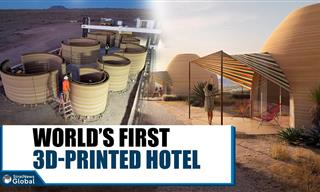 4:57
4:57
The First 3D-Printed Hotel is Already Being Built!
s evidence of this, a groundbreaking project is nearing completion, in which a hotel is being printed, and tourists will soon be able to visit it. Curious to see what it looks like?

Battle of the Sexes: How Our Brains React Differently
A new study claims to have discovered why women are typically more emotionally sensitive than men. Read all about it here.
 4:13
4:13
What Does Medicine ACTUALLY Do In the Body? Fascinating.
What really happens in our bodies when we take medicine, have you ever wondered? This video will answer your question.

Nobody Believed These 5 Scientists, But They Were Right
These 5 scientists were shamed and ousted, or rudely ignored, although years later, their "crazy" theories turned out to be true...
 11:05
11:05
Science: Can AI Preserve Our Most Precious Memories?
Technologist Pau Aleikum Garcia talks about synthetic memories.

Take an Incredible Tour of Our Colossal Milky Way Galaxy
Fly Through the Milky Way Galaxy!
 3:07
3:07
The Speed of Light Visualized in a Magnificent Video
Have you got the patience? Watch, in scale, just how long it takes light to travel from Earth to Mars

These 11 Brain Facts Are Enough to Boggle Your Mind
When you consider the sheer complexity of the human brain, it's difficult to wrap your head around it. Learn these 11 fascinating facts about the human brain.

Scientists Develop 'Flying Dragon' Robot to Fight Fires
Scientists in Japan have created a water-spitting 'flying dragon' robot to fight fires.

13 Astonishing Things You Never Thought You'd See
Here are 13 photos of rare phenomena you never thought you'd see!

10 Unanswered Mysteries You've Always Wondered About!
You might not have thought about the most curious cases of the bizarre things that we encounter every day.

6 Remarkable Yet Overlooked Minds That Shaped Our World
These underappreciated geniuses deserve more recognition.
 15:34
15:34
This Stunning Video Visualizes the Size of the Universe
This video visualizes the number of galaxies in the world, giving you a look into the true size of our enormous universe.
To enable your Ad-Free Subscription, please fill the fields below
Your subscription was successful, now you can enjoy an ad-free experience!!
Note: To make sure you get no ads, please make sure to log in to your account. If you are logged in already, then refresh the page. The subscription can be cancelled at any time.


